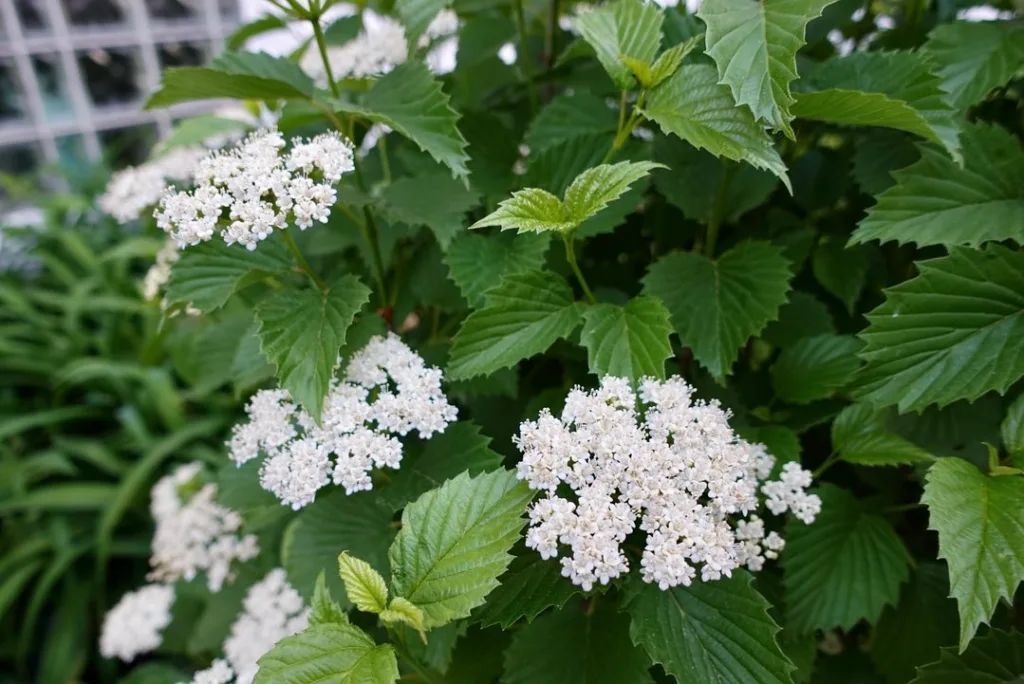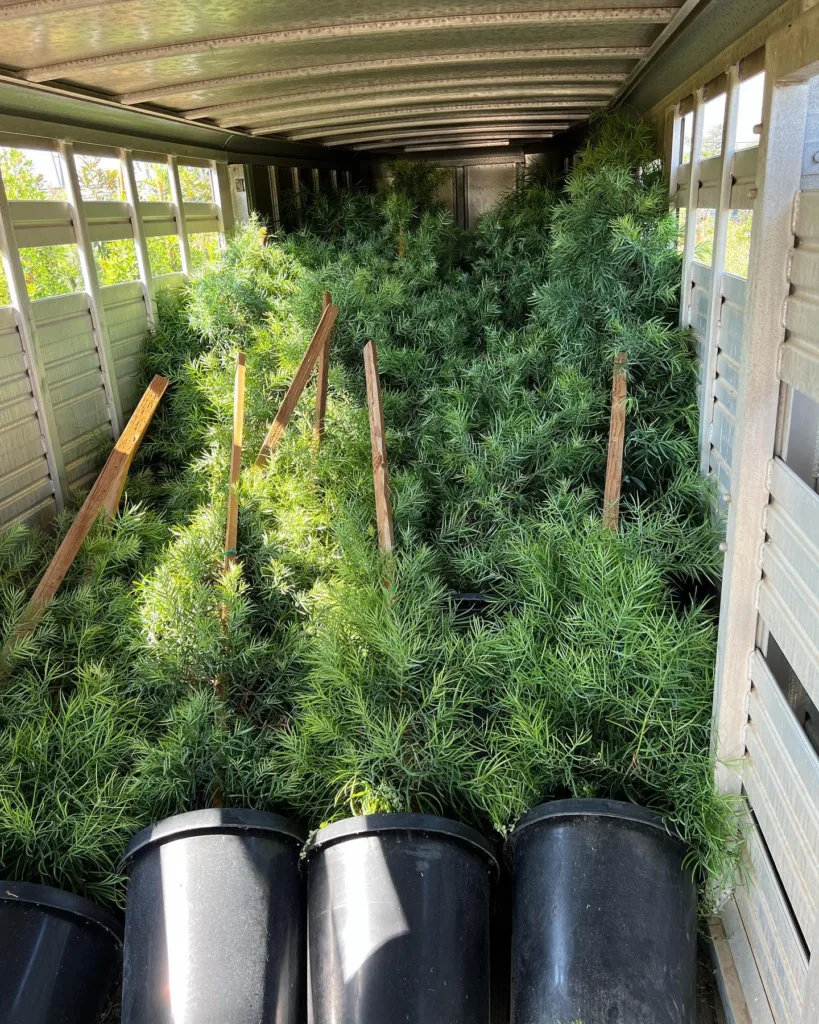
Rhus: A Plant Genus with a Colorful Character
I’ve always been fascinated by the sheer diversity of the plant world. From towering redwoods to delicate mosses, each species has its own unique story to tell. Lately, I’ve been particularly drawn to the genus Rhus, a group of plants that are as beautiful as they are varied. Known commonly as sumac, these plants are found throughout the world and boast a range of characteristics, from the vibrant fall foliage of the smooth sumac to the irritating rash caused by poison ivy.
A Diverse Family with Global Reach
The Rhus genus is a member of the Anacardiaceae family, which also includes cashews, mangoes, and pistachios. This might seem surprising given the notoriety of some Rhus species for causing contact dermatitis, but it speaks to the incredible diversity within this family. Rhus plants themselves come in all shapes and sizes, from small shrubs to towering trees. They can be found in a variety of habitats, from the dry hillsides of California to the wetlands of Florida. This adaptability is a testament to their resilience and evolutionary success. Here are:
- Rhus allophyloides Standl.
- Rhus amherstensis W.W.Sm.
- Rhus andrieuxii Engl.
- Rhus aromatica Aiton Plant FAQs: Rhus Aromatica Gro-Low
- Rhus arsenei F.A.Barkley
- Rhus × ashei (Small) Greene
- Rhus bahamensis G.Don
- Rhus barclayi (Hemsl.) Standl.
- Rhus caudata Lauterb.
- Rhus chinensis Mill.
- Rhus chondroloma Standl.
- Rhus choriophylla Wooton & Standl.
- Rhus ciliolata Turcz.
- Rhus copallinum L.
- Rhus coriaria L.
- Rhus dhuna Buch.-Ham. ex Hook.f.
- Rhus duckerae F.A.Barkley
- Rhus galeottii Standl.
- Rhus glabra L.
- Rhus hartmanii F.A.Barkley
- Rhus hypoleuca Champ. ex Benth.
- Rhus integrifolia (Nutt.) Benth. & Hook.f. ex W.H.Brewer & S.Watson Plant FAQs: Rhus Integrifolia
- Rhus jaliscana Standl.
- Rhus kearneyi F.A.Barkley
- Rhus lamprocarpa Merr. & L.M.Perry
- Rhus lanceolata (A.Gray) Britton
- Rhus lenticellosa Lauterb.
- Rhus lentii Kellogg Plant FAQs: Rhus Lentii
- Rhus linguata Slis
- Rhus michauxii Sarg.
- Rhus microphylla Engelm.
- Rhus muelleri Standl. & F.A.Barkley
- Rhus nelsonii F.A.Barkley
- Rhus oaxacana Loes.
- Rhus ovata S.Watson Plant FAQs: Rhus Ovata – Sugar Bush
- Rhus pachyrrhachis Hemsl.
- Rhus palmeri Rose
- Rhus potaninii Maxim.
- Rhus × pulvinata Greene
- Rhus punjabensis J.L.Stewart ex Brandis
- Rhus rubifolia Turcz.
- Rhus sandwicensis A.Gray
- Rhus schiedeana Schltdl.
- Rhus schmidelioides Schltdl.
- Rhus standleyi F.A.Barkley
- Rhus taishanensis S.B.Liang
- Rhus taitensis Guill.
- Rhus tamaulipana B.L.Turner
- Rhus teniana Hand.-Mazz.
- Rhus tepetate Standl. & F.A.Barkley
- Rhus terebinthifolia Schltdl. & Cham.
- Rhus trilobata Nutt. Plant FAQs: Rhus Trilobata
- Rhus typhina L. Plant FAQs: Staghorn Sumac – Rhus Typhina
- Rhus vestita Loes.
- Rhus virens Lindh. ex A.Gray
- Rhus wilsonii Hemsl.
Is sumac edible?
Absolutely! Sumac adds this amazing tangy, citrusy pop to so many dishes. I recently made grilled lamb kebabs, and a sumac marinade completely transformed them. The flavor is bright and unexpected, but it complements the lamb perfectly. Plus, a sprinkle of sumac on a salad or hummus adds a gorgeous red pop of color and a delightful burst of lemony goodness. It’s become a pantry staple in my kitchen!
How to harvest sumac?
Unfortunately, I haven’t had the chance to harvest sumac myself yet. It seems like it can be a bit finicky! From what I’ve read, the key is timing. You want those sumac clusters to be a vibrant red and fully formed, but before any heavy rains come and wash away some of the flavor. Some foragers even say to taste a berry before harvesting to make sure it’s nice and tangy. Then, it’s all about using sharp tools like pruning shears to clip the clusters right where they meet the branch. I’m hoping to try it this summer – freshly harvested sumac sounds amazing!
How to stop sumac trees from spreading?
Sumac can be a persistent spreader, and I’ve definitely battled some unwanted saplings in my yard. The key seems to be a two-pronged attack: dealing with existing growth and preventing new sprouts. For established trees, I’ve had some success with the double-cutting method. You basically whack the tree down low to the ground in July, and then hit it again in August. It stresses the tree and helps reduce root suckering. The downside is you have to be persistent and keep at it for a few years. For those pesky sprouts popping up throughout the yard, I’ve been pulling them up by the roots whenever I see them. It’s not glamorous work, but it seems to be keeping them at bay. I’m also considering putting down some heavy-duty mulch around desirable plants to create a barrier against new sumac growth. It’s a constant battle, but I’m determined to win the sumac war in my yard!
Where to buy sumac near me?
I can’t search for specific stores myself, but I can definitely help you narrow down some places to look for sumac near you! Here are a few ideas:
- Specialty spice shops: These are a great bet for high-quality sumac. Look for stores that focus on Mediterranean or Middle Eastern ingredients.
- International grocery stores: These stores often carry a wider variety of spices than regular grocery stores. They might have sumac in the spice aisle or near other Middle Eastern ingredients.
- Natural food stores: Many natural food stores stock a good selection of spices, including sumac.
If you’re striking out at brick-and-mortar stores, you can also try online retailers like Amazon or Instacart. Those might be a good option if you need sumac quickly or can’t find it locally.circle
How do i get rid of sumac?
Getting rid of sumac depends on how persistent you want to be and how established the sumac is. Here’s what I’ve found works for different scenarios:
- Young saplings: If you’re catching new sumac growth early, you can usually pull it up by the roots. The key is to get the entire root system, otherwise it’ll just sprout back. Throw on some gloves and be prepared to dig a little!
- Established trees: This is where things get trickier. For smaller trees, I’ve had some success with the cutting method. You basically whack the tree down low to the ground with loppers or an axe in July, then hit it again in August. This stresses the tree and reduces root suckering. But be warned, it takes persistence – you might have to repeat this for a few years.
- Stubborn sumac: For truly aggressive sumac, there’s the herbicide option. Now, I’m not a huge fan of chemicals, but sometimes you gotta do what you gotta do. Just be sure to follow the instructions carefully and choose a herbicide safe for nearby plants. A spot treatment on the stump after cutting can help prevent regrowth.
Remember, whichever method you choose, wear gloves and long sleeves when dealing with sumac – the sap can irritate your skin. Also, be sure to check local regulations before using herbicides.
How to make sumac lemonade?
There are a couple ways to make sumac lemonade, and I’ve tried both with great results! Here’s my favorite method:
- Sumac Syrup: This is a great way to have sumac lemonade on hand all summer long. Simply simmer ground sumac with water and sugar to create a concentrated syrup. You can then store it in the fridge and add a splash to cool water whenever you want a refreshing sumac-ade.
- Quick Infusion: This is a perfect option if you’re craving sumac lemonade right away. Steep whole sumac berries in cool water for a few hours. Strain out the berries and add the infused water to a mixture of lemon juice, sugar, and water. Experiment with the ratios to find your perfect balance of tart, sweet, and tangy!
No matter which method you choose, you can add fresh mint leaves for an extra burst of flavor. I love how the bright citrus from the sumac pairs so well with the sweetness of lemonade. It’s a delicious and unique summer drink!
How to make sumac spice?
Making your own sumac spice is a fun way to get the freshest flavor and appreciate the entire process. Here’s how I’ve done it in my kitchen:
- Harvesting: If you have access to a sumac grove, aim for a dry period to pick the berries. Rain can wash away some of the tartness. Look for vibrant red clusters that are fully formed. A quick taste test can confirm the tangy flavor you’re looking for.
- Separating the Berries: Once you have your clusters, you can either strip the berries by hand or use a fork to gently rake them off the stems. Be careful not to smash the berries, as we want that beautiful red dust.
- Drying: Now comes the drying stage. Spread the berries out on a baking sheet in a single layer and place them in a dehydrator set to its lowest setting (around 125°F). Alternatively, you can use your oven at its lowest setting with the door cracked open for ventilation. The key is slow and steady drying – we want to remove the moisture without burning the berries. This can take anywhere from 6 to 12 hours, so check on them periodically.
- Grinding and Sifting: Once the berries are completely dry and brittle, it’s time for grinding. A mortar and pestle is ideal for this task, but a spice grinder will work in a pinch. Pulse the berries gently to avoid pulverizing the seeds, which can add bitterness. After grinding, sift the resulting powder through a fine-mesh sieve to separate the coarse bits and seeds from the vibrant red sumac dust – that’s the magic ingredient!
- Storage: Store your homemade sumac spice in an airtight container in a cool, dark place. It should stay fresh and flavorful for up to a year.
Making your own sumac adds a whole new level of appreciation to this unique spice. The vibrant color and the intense, citrusy flavor are definitely worth the effort!
What do sumac trees look like?
There are a few different species of sumac, but they all share some common characteristics. Here’s a breakdown of what to look for:
- Size and Shape: Sumacs can grow as shrubs or small trees, typically reaching heights between 10 and 30 feet. They tend to have a rounded or irregular crown with multiple trunks or branches growing from the base.
- Leaves: Sumac leaves are compound, meaning they have several leaflets branching off a central stem. The leaflets can be smooth or toothed on the edges, and they usually turn a brilliant red, orange, or yellow in the fall.
- Bark: Sumac bark is typically gray or brown and can be smooth or slightly textured. On some species, like staghorn sumac, the young branches have a fuzzy, reddish cast.
- Flowers: Sumac flowers are small and greenish-yellow, and they grow in clusters at the tips of the branches. They’re not particularly showy, but they’re an important food source for pollinators.
- Fruit: The most distinctive feature of sumac trees is their fruit. Sumac berries grow in dense clusters and turn a bright red color in the fall. These clusters can be quite large and add a pop of color to the landscape. While the fruit is technically a drupe, it looks similar to a fuzzy berry.
How to dry sumac?
There are two main ways to dry sumac for your homemade spice: using a dehydrator or your oven. Here’s a breakdown of both methods:
Dehydrator:
- Prep the berries: Separate the sumac berries from the clusters by hand or using a fork. Aim for gentle removal to avoid breaking the berries and losing that precious red dust.
- Arrange the berries: Spread the berries in a single layer on the dehydrator trays, making sure they don’t touch or overlap. This allows for even airflow and drying.
- Set the temperature: Most dehydrators have a low setting around 125°F (52°C) which is perfect for sumac. This slow drying preserves the flavor and color.
- Drying time: Depending on your dehydrator and the thickness of the berries, drying can take anywhere from 6 to 12 hours. Check on them periodically and remove any that feel completely dry and brittle.
Oven drying:
- Preheat and prepare: Set your oven to its lowest setting, which is usually around 150°F (65°C). Line a baking sheet with parchment paper for easy cleanup.
- Spread the berries: Similar to the dehydrator method, arrange the sumac berries in a single layer on the baking sheet.
- Crack the door: For proper ventilation and moisture release, prop the oven door open slightly with a wooden spoon or oven mitt handle.
- Drying time: Oven drying can take a bit longer than a dehydrator, so expect anywhere from 8 to 14 hours. Keep an eye on them and rotate the baking sheet occasionally for even drying.
Tips for both methods:
- Check for dryness: The best way to tell if your sumac is dry is by touch. The berries should be completely dry and crumble easily when pressed between your fingers.
- Patience is key: Don’t rush the drying process! High heat can burn the berries and compromise the flavor.
- Cool completely: Once the berries are dry, let them cool completely on the tray or baking sheet before grinding.
No matter which method you choose, drying your own sumac is a rewarding experience. You’ll end up with a vibrant red spice with a unique, tangy flavor to elevate your dishes!
How to make sumac tea?
Making sumac tea is a breeze! There are two main approaches, depending on whether you have whole sumac berries or pre-ground sumac spice. Here’s how to tackle it both ways:
Sumac tea with whole berries (traditional method):
- Soak the berries: In a pitcher, combine several clusters of sumac berries with cold water. The exact amount of water depends on how strong you like your tea, but a good starting point is 4 cups of water for 4-5 sumac clusters.
- Let it sit: Cover the pitcher and refrigerate overnight. Soaking allows the water to extract the flavor and tangy goodness from the berries.
- Strain and enjoy: The next day, strain the tea through a fine-mesh sieve or cheesecloth to remove the berry particles. Enjoy your tea hot or cold! You can add a touch of honey or sugar for some sweetness, if desired.
Sumac tea with ground sumac (quick method):
- Steep the sumac: In a mug, add 1-2 teaspoons of ground sumac, depending on your preferred strength.
- Heat the water: Boil water in a kettle or pot.
- Pour and steep: Pour the hot water over the sumac in your mug. Let it steep for 3-4 minutes, allowing the flavors to infuse.
- Strain (optional): If you find any sumac dust lingering in the tea, you can strain it through a small tea strainer.
- Sweeten (optional): Add a touch of honey, sugar, or another sweetener to taste.
Tips for both methods:
- Freshness matters: For the best flavor, use fresh or relatively new sumac berries or ground sumac. Sumac, like other spices, can lose potency over time.
- Adjust the strength: Experiment with the amount of sumac to find your perfect balance of tartness.
- Spice it up: Feel free to add a twist to your sumac tea with other ingredients like ginger, mint leaves, or even a squeeze of lemon.
Sumac tea is a refreshing and invigorating beverage with a unique flavor profile. It’s a simple way to enjoy the tangy goodness of sumac and potentially reap some health benefits!
Is sumac poisonous to dogs?
While the word “sumac” might raise an eyebrow due to its poisonous cousins poison ivy, oak, and sumac, the good news is that true sumac (of the genus Rhus) is not poisonous to dogs!
According to the American Society for the Prevention of Cruelty to Animals (ASPCA), sumac isn’t toxic to our canine companions. However, there’s a small caveat.
Sumac, like poison ivy, oak, and sumac, contains urushiol, the oil that causes the itchy rash in humans. If your dog ingests sumac, they likely won’t get poisoned, but they could potentially transfer that urushiol oil onto your skin or fur if you pet them. So, it’s still a good idea to keep an eye on your pup around sumac trees and remove any sumac particles from their fur if they brush up against it.
If you’re ever worried your dog might have eaten something poisonous, it’s always best to consult a veterinarian or the ASPCA Animal Poison Control Center at (888) 426-4435.
What is a substitute for sumac?
Sumac’s unique flavor profile can be a challenge to replicate exactly, but there are several substitutes that can come close depending on what aspect of sumac you want to capture. Here are a few options:
- For the tangy citrus flavor:
- Lemon zest and juice: This is a classic substitute that offers a similar level of acidity. Use a combination of zest for a touch of bitterness and juice for a brighter pucker.
- Ground coriander: While coriander has a more earthy flavor than sumac, it also has a citrusy undertone that can work in some dishes.
- For the tartness:
- Tamarind powder: This has a sour and slightly sweet flavor that can add a similar punch to certain dishes, especially savory ones.
- Pomegranate molasses: This thick syrup adds a complex tartness with hints of sweetness and depth.
- For a more general replacement:
Remember when using substitutes:
- Start with a smaller amount: Sumac’s tang is potent, so you’ll likely need less of the substitute. Gradually add more to taste.
- Consider the dish: Think about what role sumac plays in your recipe. Is it for acidity, a touch of fruitiness, or a general savory depth? Choose a substitute that complements those elements.
With a little experimentation, you can find a substitute that works for your dish and keeps those taste buds happy!
Can goats eat sumac?
The information on goats and sumac can be a bit conflicting. Here’s what I’ve found:
- Sumac can be part of a goat’s diet: Some sources, like veterinary websites and goat breeder forums, mention sumac as a browse option for goats. Goats are known for their wide-ranging appetites and ability to handle tough or unusual plants.
- But caution is advised: Other resources, including some extension services from universities, list sumac as a potentially toxic plant for goats. This might be due to the presence of urushiol, the oil in poison ivy, oak, and sumac that causes skin irritation in humans.
Here’s what I would do if I had goats:
- Identify the sumac species: There are different types of sumac, and some might be more palatable or safer for goats than others. Consulting a local nursery or agricultural extension service might be helpful for proper identification.
- Introduce slowly: If you decide to let your goats try sumac, introduce it gradually and monitor them closely for any signs of illness.
- Consider alternatives: There are plenty of safe and nutritious browse options available for goats, so unless sumac is readily available on your land, it might be best to stick with those.
Overall, while some goats might be able to handle sumac, it’s best to err on the side of caution and provide them with safer browsing options.
Can you burn sumac?
Yes, you can burn sumac, but with a few caveats:
- Only burn staghorn or smooth sumac: Make absolutely sure you’re burning stagħorn sumac (Rhus typhina) or smooth sumac (Rhus glabra). These are the two most common non-toxic varieties used as firewood. Burning poison sumac (Rhus vernix) is a big no-no! Poison sumac contains urushiol oil, the same irritant found in poison ivy and oak. Inhaling the smoke from burning poison sumac can cause severe respiratory problems.
- Dry it thoroughly: Like any firewood, sumac burns best when it’s well-seasoned and dry. Moist wood burns poorly and creates more smoke.
- It’s not the best firewood: Sumac burns quickly and doesn’t produce a lot of heat compared to denser hardwoods. It’s more of a quick-burning kindling option or good for adding a little smoky flavor to grilling.
Here are some additional tips for burning sumac safely and effectively:
- Check local regulations: Some areas might have restrictions on burning yard waste or specific types of wood. Always check with your local authorities before burning anything.
- Burn in a safe location: Choose a designated fire pit or burn area away from flammable structures and trees.
- Have a water source nearby: Keep a bucket of water or a hose close by in case the fire needs to be extinguished.
- Never leave a fire unattended: Always stay close by and supervise the fire until it’s completely out and just ashes remain.
By following these safety precautions, you can enjoy burning sumac for a quick fire or a touch of smoky flavor in your cooking. But remember, identification is key – only burn staghorn or smooth sumac, and avoid poison sumac at all costs!
Can you eat sumac berries?
Absolutely! Sumac berries are not only edible, but they’re also quite delicious! They have a wonderful tangy, lemony flavor that can add a unique zip to many dishes. Here’s why sumac berries are a great addition to your pantry:
- Flavorful: The tartness of sumac is similar to lemon, but with a more subtle depth. It adds a delightful brightness to salads, dips, and grilled meats.
- Versatile: Sumac works wonders in a variety of cuisines, from Middle Eastern to Mediterranean to even some North African dishes. It’s a staple spice in regions where it grows naturally.
- Healthy option: Sumac is a good source of antioxidants and may offer some anti-inflammatory benefits.
- Easy to find: Sumac is becoming increasingly popular and can be found at many grocery stores, especially those with a good selection of international spices.
So next time you’re looking for a way to add a little zing to your food, don’t hesitate to reach for the sumac! You might just discover your new favorite spice.
Do deer eat sumac?
Deer and sumac have a bit of a complicated relationship! Here’s the breakdown:
- Sumac leaves and branches: Not a favorite. Deer generally avoid browsing on sumac leaves and branches. They’re not particularly palatable due to tannins, which can be astringent and bitter.
- Sumac fruit: A tasty treat (sometimes). In the winter months, when food options are scarce, deer will occasionally munch on sumac berries. The red clusters are a source of sustenance, providing some sugar and energy. However, they’re not a top food choice.
- Sumac stems: Rub-a-dub-dub. Interestingly, deer are attracted to sumac for reasons other than food. Male deer, especially during the rut (mating season), will use sumac stems to rub their antlers on. This helps remove velvet (fuzzy skin) from their antlers and mark their territory.
So, while deer won’t be chowing down on sumac leaves all day, they might find the occasional berry or sumac stems appealing for different reasons.
How do you pronounce sumac?
There are two common pronunciations for sumac, depending on where you’re from:
- SHOO-mak: This pronunciation is prevalent in many parts of the United States, particularly the Midwest.
- Soo-mak: This pronunciation is closer to the original Arabic word “summāq” and is often used in British English and other parts of the world.
Both pronunciations are considered correct, so say it whichever way feels most natural to you!
If i die, water my plants!



